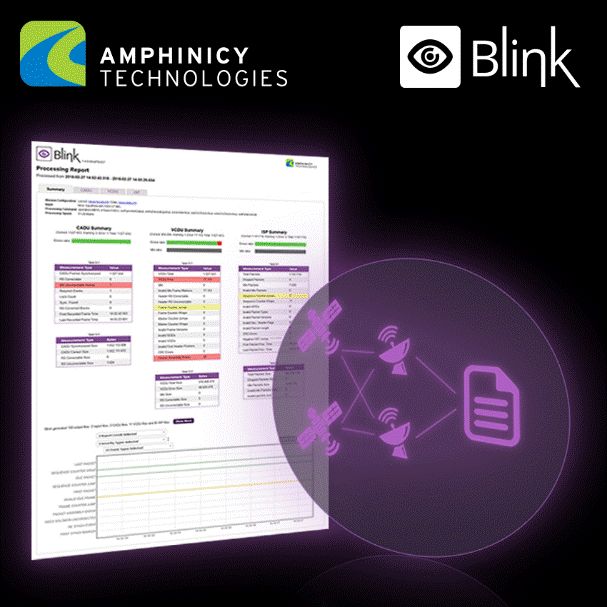Satellite Data Acquisition in the Blink of an Eye
Washington, D.C., May 3, 2019--Humans are using space to improve life on earth. Climate change monitoring, natural crisis mitigation, food production and natural resource management, security and disaster management, transportation are just some of the examples where space data improves our everyday life. Reliable and timely space data is a priority. New sophisticated optical and radar payloads and new satellite constellation with frequent revisits are putting pressure on the satellite ground segment performance. More and more data are coming from the above from both traditional and NewSpace constellations. Therefore, there is a need reliable, powerful and scalable data acquisition solutions on the ground to make space applications efficient.
 This case study will focus on the two major trends in the satellite ground segment industry: Ground station as a service powered by cloud computing technologies; and the advantages of the software-centric over hardware-centric solutions.
This case study will focus on the two major trends in the satellite ground segment industry: Ground station as a service powered by cloud computing technologies; and the advantages of the software-centric over hardware-centric solutions.
Key characteristics and advantages of the “ground station as a service” model:
- Satellite ground station on demand, fast and direct access to your data and a-la-carté options.
- Avoid building your own ground stations and antennas and scale your satellite operations quickly, easily and cost-effectively.
- Avoid obtaining costly hardware equipment for data processing, storage and networking and rely on cloud computing technologies.
- Often the global service is provided through the cloud and you are not tied to a specific geolocation. You can communicate with your satellites from distant locations all around the world – without needing to obtain a permission to install the GS in another country.
- No long-term commitments: Avoid obtaining long-term leases with ground station providers. Download the data when and where you need it and pay only for what you have used.
Being a 100% software solution, Blink is perfect for cloud computing: connect it to the signal from the antenna, and it will make digital signal processing (DSP) and frontend processing completely in the cloud, making your downstream processing, distribution and applications simple and straightforward. It is powerful (supported the most demanding missions with +1Gbps throughputs) scalable (from 1 to 100 satellite-constellations), Newspace-friendly solution and can provide flexible business models, aligned with service providers’ models.
Software-based solutions can provide advantages over hardware-based ones:
- Enables flexibility: multi-purpose, multi-mission and multi-protocol
- Leverages well tested COTS components and standardized IP technology
- Future proof: it is easier to develop, reconfigure, maintain, repair, deliver – can provide shorter lead times (weeks vs. months)
- It comes with affordable pricing (no more expensive hardware) and flexible licensing options, including Pay-as-you-grow model
- Enables developing disruptive products and services, opening new agile companies and make technology accessible to broader audience of entrepreneurs and users
Amphinicy Technologies, a company that provides software solutions for the satellite industry knows all about that. They provide complex software solutions and all-round software support for the satellite and space industry for more than 20 years. After 10 years in the Earth Observation satellite data acquisition domain they acquired in-depth knowledge and experience to develop the Blink solution, an ultra-fast 100% software-based satellite data acquisition solution.
Blink is an innovative and disruptive technology selected as one of the 5% most innovative European projects in the space sector by the European Commission. Its qualities are:
Scalability: Blink can support nanosatellite constellation operators growing their platform from a demo spacecraft to several hundred satellites in orbit, as well as traditional missions like Copernicus Sentinels with throughputs of over 1Gbps. Blink comes in different product packages based on the performance requirements and mission size.
Modular solution: Blink can be used in different scenarios:
- Assembly, integration and testing (AIT) phase to test satellite communication components before launching
- In operational phase for real-time data acquisition and processing with rich reporting capabilities.
- Post-processing and offline data analysis at any time.
Flexibility: Blink supports multiple protocols (CCSDS, DVB-S2...) and modulation schemes and is easy to configure. One Blink device can be used to receive data from different missions, reception is scheduled in software.
Licensing: Blink comes with affordable prices and two business models: standard license and pay-per-use tailored for the NewSpace market. It comes in three options, tailored to your needs and requirements:
- Blink Software-Full software library for ultra-fast CCSDS telemetry processing and analysis. Command line tool enables data reception troubleshooting during all phases of the mission life cycle, including ad hoc, extremely fast header analysis, data extraction, conversion and report generation.
- Blink Device-Blink software integrated with a high data rate SDR (Software Defined Radio) demodulator provides a stand-alone EO telemetry processor and analyzer as a part of your ground data acquisition station.
- Blink Station-Blink Device completely integrated with Monica or a third-party M&C solution to provide a full-fledged ground station data acquisition and control.
See a demo of Blink at the Amphinicy booth at Satellite from May 6-8, 2019 at booth # 2154. For more information go to blink.amphinicy.com





